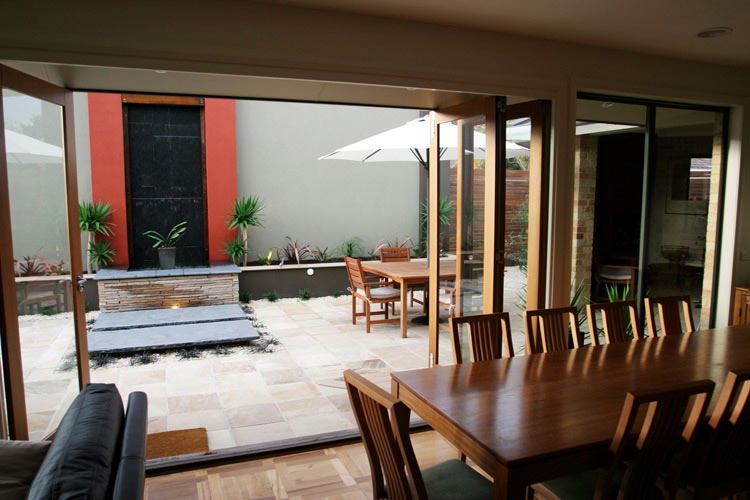A Beginner’s Guide To Sandstone Paver Selection
I am sure that most (if not all) of us have been bewildered by a salesperson trying to force their product on us at one time or another. This can be quite problematic if you aren’t familiar with the product at all, as you could end up making the wrong choice. Choosing sandstone pavers over other materials does not have to be the daunting task it appears – using this helpful beginner’s guide to sandstone selection can ensure that you know what you’re doing.
Formation & Composition
Sandstone is a sedimentary rock that is predominantly composed of quartz. It is usually cemented together with clay and/or infused with secondary silica (which has been chemically deposited). The presence of minor minerals, such as iron and manganese, give the pavers their unique characteristics; the movement of these soluble minerals throughout the stone can produce, for example, banding or a uniform colour.
Surface Finish
The typical gritty surface of sandstone pavers actually prevents the development of a polished finish, however, some denser materials can produce more of a honed finish. The more common types of surface texture include sawn, bush hammer, sandblasted and rock-face.
Appearance
Sandstone is typically white, gold or brown in colour. It is sometimes available in different colors like red, purple, grey, and green and black depending on the minerals.
Selection Reasons
Because sandstone is a very versatile material that can easily be cut and formed, it is a common choice. Most surface finishes will comply with strict slip resistance requirements and, as it doesn’t rapidly absorb heat, it stays cool during the hottest time of day also.
Common Uses
These are having a number of common uses residentially and commercially, including: paving (such as patios and pathways), internal and external cladding, statues, and masonry construction.
Characteristics
You should consider that some pavers contain expansive clays, which can cause a problem if they are exposed to repetitive wet-dry cycles. These cycles can cause the clay to expand and contract, leading to decay or even bowing. The stone also has a fairly high water absorption rate and a low resistance to wear.
Performance Evaluation
When choosing between sandstone pavers, it is important to ensure that they will perform in the intended location. Basic physical properties (such as water absorption and density) will help you to determine their durability and resistance to staining. You should also evaluate the strength of the stone in both wet and dry situations, as well as its resistance to salt attack if being used outdoors. The use of instable pavers can have devastating effects.
We hope that this article has provided with at least a basic understanding of sandstone pavers and that it assists you in the selection of materials for your upcoming project. Don’t allow yourself to become bamboozled by pushy salespeople who are trying to reach monthly targets rather than provide you with a suitable, high quality product. If you do require assistance, however, ensure that you speak with a dealer you can trust.












